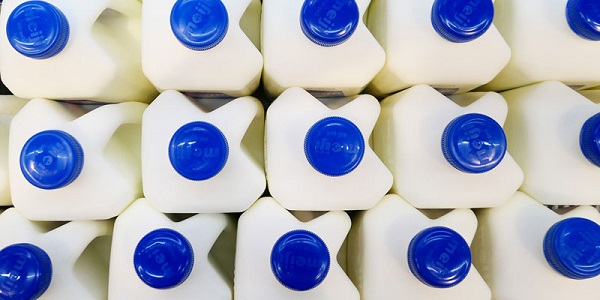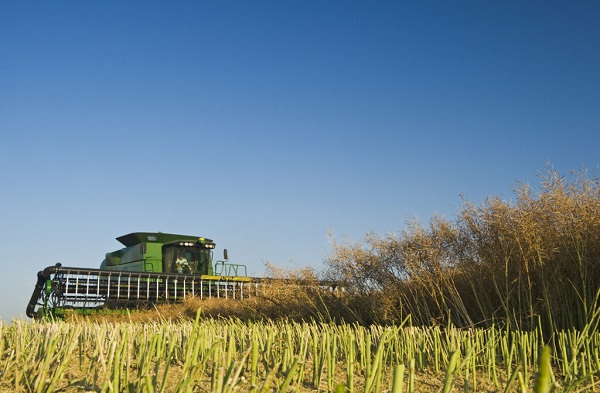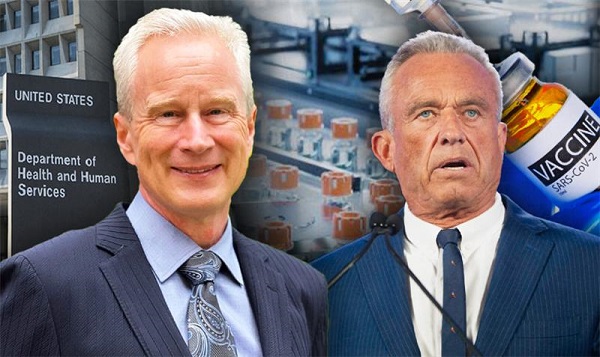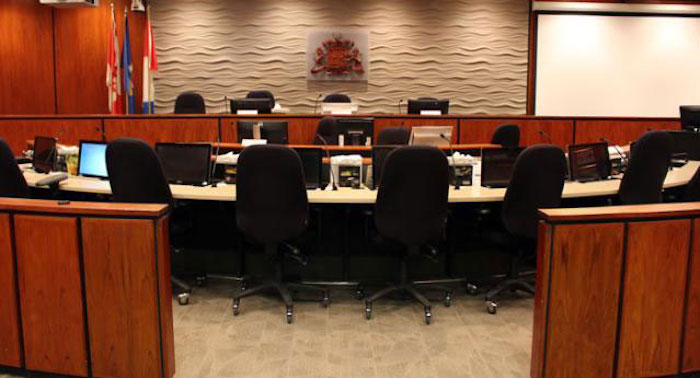Agriculture
Canada’s food supply chain is strong but will world-wide pressures effect It?

Within days of government’s shelter in place orders, there were ridiculous scenes of people fighting over toilet paper along with empty shelves in some other areas of grocery stores, including the fresh meat section. It was an eye-opener of what could come. With the food supply chains facing unprecedented pressures caused by Covid-19, governments have been assuring citizens that there are no food shortages and there is no need to hoard or panic buy.
After the weeks of the ongoing Covid-19 disaster there are cracks showing in the world’s ability to keep all of its citizens fed. Overseas there have already been scenes of hungry people looting food trucks. On April 28th, there were street riots in Lebanon over food price increases.

A food truck gets looted by desperate people near Cape Town, South Africa
A healthy food supply chain relies on predictability
In 2015 the Group of 20 (G20), held a conference to address “…food waste and loss – a major global problem…”. It was a much simpler time. The world-wide food supply chain did not have to deal with a very contagious and complicated coronavirus.
When working properly, a country’s food distribution is a marvel of efficiently and logistics. Delivering massive amounts of fresh food to consumers to every corner of the country, every day. But a chain is only as strong as its weakest link.
“It’s something we don’t like doing, no dairy farmer likes doing it. There are just some real limitations in our supply chain right now.” Karlee Conway with Alberta Milk
There are some scenarios happening in North America that have to be an eye-opener for everyone. Food rotting in the fields, whole crops getting ploughed under, fresh milk getting poured down the drain. The milk dumping is also happening in Canada. Karlee Conway with Alberta Milk said that many farmers are forced to make a difficult decision.
“It’s something we don’t like doing, no dairy farmer likes doing it. There are just some real limitations in our supply chain right now.”
And even more shocking, meat and egg producers in North America have already started culling their animals. A lack of buyers and the closing of processing plants due to sickness and even death of employees.
He and she nailed it
Agriculture Minister Devin Dreeshen said this on March 27:
“Alberta does not have a food supply shortage, but the entire national supply chain should be declared an essential service. There are a lot of moving parts to get food to market and onto kitchen tables. Alberta’s supply chain is responding well, but it is not business as usual.”
Many things have changed since then. Elaine Power, a food security expert at Queen’s University, is more blunt, saying the coronavirus pandemic is exposing “critical weaknesses” in various vital networks, including health care systems and food supply chains. “The people who are already food insecure, that’s only going to get worse. The type of resources that people would normally draw on probably aren’t going to be there.”

Beef ready for sale at a grocery store. Will prices go up? Will there be shortages?
Daily press briefing on April 21st
Prime Minister Justin Trudeau said in regard to the Cargill beef processing plant closing and another major Alberta plant’s production reduction after staff contracting Covid-19:
“We are not at this point anticipating shortages of beef, but prices might go up. We will of course be monitoring that very, very carefully.”
“We stress the importance of avoiding food losses”
On the same day the Prime Minister talked about the Alberta meat processing plants, the G20’s Agriculture and food ministers held an emergency meeting. The G20 makes up more than 80% of the world’s Gross Domestic Product (GDP). At this virtual meeting, the countries agreed to the following:
“Any emergency measures to contain the spread of the COVID-19 pandemic must not create unnecessary barriers to trade or disruption to global food supply chains.” And that, “Under the current challenging circumstances, we stress the importance of avoiding food losses and waste caused by disruptions throughout food supply chains, which could exacerbate food insecurity and nutrition risks and economic loss.”
Easy to say, much harder to do
Just in North America, if the past 5 weeks alone was a test on the G20’s agreed to statement, an “F” has been earned so far.
Our food system is distributed into two main streams; the large bulk volume packaging going to the food service areas and the smaller personal size portions going to consumer stores.
When the full stop happened, restaurants, hotels, schools and the majority of bulk orders stopped. Regular expedited weekly sales were sent to the grocery stores, leaving massive amount of unsold produce in the fields.

Gene McAvoy photo of a farmer plowing under rip tomato plant fields has upset viewers on Facebook.
Gene McAvoy, associate director of stakeholder relations at the University of Florida’s Institute of Food and Agricultural Sciences and president of the NACAA saw the orders stop.
“On March 24th, everything changed, from brokers the orders stopped, everything got quiet. The 25th, (was) super-quiet. Producers were blindsided. Since then tomato (sale) volumes are down 85%, green beans 50%, cabbage is (down about) 50%.”
And it is not just those crop. It’s onions, squash, lettuce and more.
Images of wasted produce and food lines
Without the regular food service industry orders, Florida farmer Paul Allen, in the just first week of April, plowed under more than six million pounds of green beans and cabbages back into his fields. He was far from the only farmer to do this. Allen explains,
“Four million people in the winter season eat lavishly three times a day on cruises from Miami alone. And 120 million tourists per year go to theme parks.”
His sales died up overnight.

Scene of milk dumping in the upstate. made New York Governor to say STOP!
This has lead to hundreds of millions of kilograms and billions of dollars’ worth of life sustaining, nutritious, fresh produce and milk has ended up as rotting waste and dumped down the drain. While, at the same time there were images of thousands of people line up for a food donation.
Countless food banks would gladly take and distribute this lost food. But the food supply system we know is one that is protected, regulated, and inspected. The last few weeks shows that in a world-wide emergency, the system has a few weak links.
On April 27th, after seeing images of milk waste, New York Governor Andrew Cuomo tweeted that he was stepping in to stop the milk dumping, asking that “…dairy producers use the excess milk to make yogurt and cheese that will be distributed to food banks & those in need.”

Helicopter footage from KENS 5 in San Antonio Texas, 10,000 family show up for food.
United Nations warns of famines of ‘biblical proportions’
It’s not just in North America. Problems are showing up around the world. In India, cows are being fed strawberries to get some use out of crops.
The United Nations Food and Agriculture Organization has reported the ‘Hammer Blow’ from the corona virus could by the end of 2020, double the amount of people facing actuate food insecurity to 265 million, up from 130 million in 2019. These numbers lead the UN to warn of the possibility of famines of ‘biblical proportions’ across as many as ‘three dozen countries’.
This kind of pending suffering will be hard to stop when the richest and most generous countries in the world are having their own food supply issues, while taking such a massive hit to their economies.
Spring is the start of Alberta’s growing season
In Alberta, the government has already made a plea for workers to fill as many of the 70,000 jobs in the food supply system. Jobs that are usually filled by temporary foreign workers, another program affected by the pandemic. With the planting season upon us, farmers are deciding how much and what to plant in 2020.
Meat production is a major part of Alberta’s economy
Meat production and processing in Alberta is vital to Canada’s supply of food. The three main beef plants in the province, Cargill in High River, JBS Canada in Brooks and Harmony Beef Company in Balzac, have all had Covid-19 problems. While a lot of the final meat processing can and is completed in production facilities and butcher shops across the country, these three main plants are responsible for 75-80% of the federally-inspected slaughter of the cattle for all of Canada.

Cargill’s High River plant
Meat processing employees work in close quarters, side-by-side on fast moving assembly lines. With this very contagious virus, it has spread through the workforce. At least 759 workers have tested positive for Covid-19 at the Cargill meat processing plant in High River, which has a workforce of 2,000. There are another 408+ people in the community that have tested positive for Covid-19, making this the largest outbreak linked to a single site in Canada. The Cargill plant is now temporarily closed.
At least 276 workers have also tested positive for Covid-19 at the JBS Food Canada beef processing plant in Brooks, with the community itself having over 760 cases. The plant is now down to one shift.
While Alberta and the Canadian governments work together to increase the number of meat inspectors available, Fabian Murphy, president of the Agriculture Union that represents the federal meat inspectors wants safety guarantees. Seven inspectors have already tested positive for the virus at the Cargill plant. Murphy has also stated that it’s only a matter of time before JBS plant in Brooks is also forced to temporarily halt production, stating that a, “14-day shutdown would allow all employees to self-isolate. After (that) production at the facility could resume.”
Pork producers are also under great pressures
The Canadian pork industry across western Canada is under extreme pressure, being called “the worst scenario seen in decades.” Faced with dropping prices for their finished hogs, no buyers for their piglets for finishing and growing backlogs in processing, the concern now is how many family pork farms will go under before this is over?
Production lines in Western Canada plants have been slowed down for better safety for workers. Add to that, US pork processing plants closing because of widespread Covid-19 outbreaks with their workers. Currently there has been a 25% reduction in pork slaughter capacity south of the border. Both the Canadian and the US pork industry producer have warned of large amounts of animals will have to be culled. And it has already started in small scales with larger culls within the next weeks.
Chicken producers are facing the same issues
Chicken producers are also facing the same issues. Sofina Foods Inc., that runs a Lilydale chicken processing plant in Calgary confirmed that one employee tested positive for COVID-19 and is in self-isolation. As well, doctors are investigating two possible cases of COVID-19 found in workers at Mountain View Poultry, near the Town of Okotoks.
British Columbia has at least two chicken processing plants with confirmed growing Covid-19 cases. One plant has temporary closed.
The talk of major animal culls, is not just talk
John Tyson, chairman of Tyson Foods, the world’s second largest processor and marketer of chicken, beef, and pork had very strong comments in a full-page ad published in The New York Times, Washington Post and Arkansas Democrat-Gazette. In part Tyson’s top person said bluntly:
“The food supply chain is breaking. Meat processing plants across the US are closing due to the pandemic. US farmers don’t have anywhere to sell their livestock. Millions of pigs, chickens and cattle will be euthanized because of slaughterhouse closures, limiting supplies at grocers.”
With published reports, the animal culling has already began. One Prince Edward Island farm euthanized market ready hogs and then dumped them in a landfill. Iowa farmer, Al Van Beek said, “What are we going to do?” after ordering 7,500 piglets to be aborted. Daybreak Foods Inc., based in Lake Mills, Wisconsin has used carts and tanks of carbon dioxide to euthanize tens of thousands of healthy egg-laying hens. Eggs are no longer being bought by their customers in the restaurants and food-service business.
USDA sets up “Coordination Centre” to “assist on depopulation”
The U.S. Department of Agriculture (USDA) has posted online:
“The USDA’s Animal and Plant Health Inspection Service (APHIS) is establishing a National Incident Coordination Center to provide direct support to producers whose animals cannot move to market as a result of processing plant closures due to COVID-19. Going forward, APHIS Coordination Center, State Veterinarians, and other state officials will be assisting to help identify potential alternative markets if a producer is unable to move animals, and if necessary, advise and assist on depopulation and disposal methods.”
“We stress the importance of avoiding food losses and waste caused by disruptions throughout food supply chains, which could exacerbate food insecurity and nutrition risks and economic loss.” April 21st G20 agreement.
If the G20 matters, North America, gets an “F” so far
The stress on the food supply chain continues to grow the longer Covid-19 lasts. On April 28th Meat producer JBS said it was reopening a Minnesota pork plant, that was shuttered by the pandemic to euthanize up to 13,000 pigs a day for farmers, not to produce meat for consumers.
Governments must get a handle on the cull of livestock and the billions of dollars of rotting produce meant to go to our populations. There are thousands of people that are hungry. The use of Food Banks in North America has hit new records, with more people needing help every day. But at the same time billions of dollars of food is being destroyed.
What’s wrong with the picture? It is just wrong; the USDA has set-up a Coordination Center to help farmer either sell their products or help kill and dispose of the carcasses in mass. All this, while people go hungry in the same country during a pandemic.
Governments need to step in and redirect this food from a landfill to population that needs it. Until this happens, the links in our food supply chain will continue to be stressed. Food for thought.

A farm tractor is silhouetted against a setting sun near Mossbank, Saskatchewan, Saturday May 11, 2002. (THE CANADIAN PRESS / Adrian Wyld)
PANDAMNIT! Alberta cancels festivals & gatherings over 15 people till September
Agriculture
Ottawa may soon pass ‘supply management’ law to effectively maintain inflated dairy prices

From the Fraser Institute
Many Canadians today face an unsettling reality. While Canada has long been known as a land of plenty, rising living costs and food insecurity are becoming increasingly common concerns. And a piece of federal legislation—which may soon become law—threatens to make the situation even worse.
According to Statistics Canada, rising prices are now “greatly affecting” nearly half of Canadians who are subsequently struggling to cover basic living costs. Even more alarming, 53 per cent are worried about feeding their families. For policymakers, few national priorities are more pressing than the ability of Canadians to feed themselves.
Between 2020 and 2023, food prices surged by 24 per cent, outpacing the overall inflation rate of 15 per cent. Over the past year, more than one million people visited Ontario food banks—a 25 per cent increase from the previous year.
Amid this crisis, a recent academic report highlighted an unforgivable waste. Since 2012, Canada’s dairy system has discarded 6.8 billion litres of milk—worth about $15 billion. This is not just mismanagement, it’s a policy failure. And inexcusably, the federal government knows how to address rising prices on key food staples but instead turns a blind eye.
Canada’s dairy sector operates under a “supply management” system that controls production through quotas and restricts imports via tariffs. Marketing boards work within this system to manage distribution and set the prices farmers receive. Together, these mechanisms effectively limit competition from both domestic and foreign producers.
This rigid regulated system suppresses competition and efficiency—both are essential for lower prices. Hardest hit are low-income Canadians as they spend a greater share of their income on essentials such as groceries. One estimate ranks Canada as having the sixth-highest milk prices worldwide.
The price gap between the United States and Canada for one litre of milk is around C$1.57. A simple calculation shows that if we could reduce the price gap by half, to $0.79, Canadians would save nearly $1.9 billion annually. And eliminating the price gap would save a family of four $360 a year. There would be further savings if the government also liberalized markets for other dairy products such as cheese, butter and yogurt. These lower costs would make a real difference for millions of Canadians.
Which brings us back to the legislation pending on Parliament Hill. Instead of addressing the high food costs, Ottawa is moving in the opposite direction. Bill C-282, sponsored by the Bloc Quebecois, has passed the House of Commons and is now before the Senate. If enacted, it would stop Canadian trade negotiators from letting other countries sell more supply-managed products in Canada as part of any future trade deal, effectively increasing protection for Canadian industries and creating another legal barrier to reform. While the governing Liberals hold ultimate responsibility for this bill, all parties to some degree support it.
Supply management is already causing trade friction. The U.S. and New Zealand have filed disputes (under the Canada-United States-Mexico Agreement and the Comprehensive and Progressive Agreement for Trans-Pacific Partnership) accusing Canada of failing to meet its commitments on dairy products. If Canada is found in violation, it could face tariffs or other trade restrictions in unrelated sectors. Dairy was also a sticking point in negotiations with the United Kingdom, leading the British to suspend talks on a free trade deal. The costs of defending supply management could ripple farther than agriculture, hurting other Canadian businesses and driving up consumer costs.
Dairy farmers, of course, have invested heavily in the system, and change could be financially painful. Industry groups including the Dairy Farmers of Canada carry significant political influence, especially in Ontario and Quebec, making it politically costly for any party to propose reforms. The concerns of farmers are valid and must be addressed—but they should not stand in the way of opening up these heavily regulated agricultural sectors. With reasonable financial assistance, a gradual transition could ease the burden. After all, New Zealand, with just 5 million people, managed to deregulate its dairy sector and now exports 95 per cent of its milk to 130 countries. There’s no reason Canada could not do something similar.
Bill C-282 is a flawed piece of legislation. Supply management already hurts the most vulnerable Canadians and is the root cause of two trade disputes that threaten harm to other Canadian industries. If passed, this law will further tie the government’s hands in negotiating future free trade agreements. So, who benefits from it? Certainly not Canadians struggling with food insecurity. The government’s refusal to modernize an outdated inefficient system forces Canadians to pay more for basic food staples. If we continue down this path, the economic damage could spread to other sectors, leaving Canadians to bear an ever-increasing financial burden.
Author:
Agriculture
2024 harvest wrap-up: Minister Sigurdson

As the 2024 growing season comes to a close, Minister of Agriculture and Irrigation RJ Sigurdson issued the following statement:
“While many Albertans were enjoying beautiful fall days with above-average temperatures, farmers were working around the clock to get crops off their fields before the weather turned. I commend their continued dedication to growing quality crops, putting food on tables across the province and around the world.
“Favourable weather conditions in August and early September allowed for a rapid start to harvest, leading to quick and efficient completion.
“The final yield estimates show that while the South, North West and Peace regions were slightly above average, the yields in the Central and North East regions were below average.
“Crop quality for oats and dry peas is currently exceeding the five-year average, with a higher rate of these crops grading in the top two grade categories. In contrast, spring wheat, durum, barley and canola are all grading in the top two grades at rates lower than the five-year average.
“Crop grading is a process that determines the quality of a grain crop based on visual inspection and instrument analysis. Factors like frost damage, colour, moisture content and sprouting all impact grade and affect how the grain will perform during processing or how the end product will turn out. Alberta generally produces high-quality crops.
“Farmers faced many challenges over the last few years and, for some areas of the province, 2024 was a difficult growing season. But Alberta producers are innovative and resilient. They work constantly to meet challenges head-on and drive sustainable growth in our agricultural sector.
“Alberta farmers help feed the world, and I’m proud of the reputation for safe, high-quality agricultural products that this industry has built for itself. Thank you to our producers, and congratulations on another successful harvest!”
-

 Brownstone Institute2 days ago
Brownstone Institute2 days agoThe Most Devastating Report So Far
-

 Business2 days ago
Business2 days agoCarbon tax bureaucracy costs taxpayers $800 million
-

 ESG1 day ago
ESG1 day agoCan’t afford Rent? Groceries for your kids? Trudeau says suck it up and pay the tax!
-

 Daily Caller1 day ago
Daily Caller1 day agoLos Angeles Passes ‘Sanctuary City’ Ordinance In Wake Of Trump’s Deportation Plan
-

 COVID-192 days ago
COVID-192 days agoDr. McCullough praises RFK Jr., urges him to pull COVID shots from the market
-

 John Stossel1 day ago
John Stossel1 day agoGreen Energy Needs Minerals, Yet America Blocks New Mines
-

 Alberta1 day ago
Alberta1 day agoProvince considering new Red Deer River reservoir east of Red Deer
-

 MAiD2 days ago
MAiD2 days agoOver 40% of people euthanized in Ontario lived in poorest parts of the province: government data





